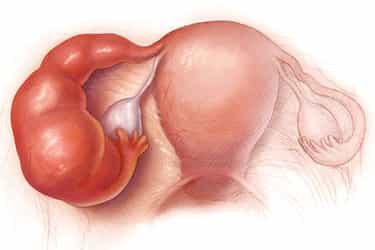Pelvic Pain
 Pelvic pain can be a sign that there might be a problem with one of the reproductive organs in a woman’s pelvic area. Although pelvic pain often refers to pain in the region of women’s internal reproductive organs, pelvic pain can be present in either sex and can stem from other causes. Pelvic pain might be a symptom of infection or might arise from pain in the pelvis bone or in non-reproductive internal organs. In women, however, pelvic pain can very well be an indication that there might be a problem with one of the reproductive organs in the pelvic area (uterus, ovaries, fallopian tubes, cervix, and vagina).
Pelvic pain can happen in both men and women and might stem from infections, abnormalities in internal organs, or pain from the pelvic bones. In women, pelvic pain might be related to the reproductive system.
Pelvic pain can be a sign that there might be a problem with one of the reproductive organs in a woman’s pelvic area. Although pelvic pain often refers to pain in the region of women’s internal reproductive organs, pelvic pain can be present in either sex and can stem from other causes. Pelvic pain might be a symptom of infection or might arise from pain in the pelvis bone or in non-reproductive internal organs. In women, however, pelvic pain can very well be an indication that there might be a problem with one of the reproductive organs in the pelvic area (uterus, ovaries, fallopian tubes, cervix, and vagina).
Pelvic pain can happen in both men and women and might stem from infections, abnormalities in internal organs, or pain from the pelvic bones. In women, pelvic pain might be related to the reproductive system. - Adenomyosis
- Endometriosis
- Fibroids
- Interstitial Cystitis
- Ovarian Cysts
- Pelvic Congestion Syndrome
- Pelvic Organ Prolapse
- Pregnancy
- Ectopic pregnancy
- Miscarriage
- Pelvic inflammatory disease
- Ovulation
- Menstrual cramps
- Ovarian cysts or other ovarian disorders
- Fibroids
- Endometriosis
- Cancer (cervix, uterus, or ovaries)
- Menstrual cramps
- Menstrual pain
- Vaginal bleeding, spotting, or discharge
- Painful or difficult urination
- Constipation or diarrhea
- Bloating or gas
- Blood seen with a bowel movement
- Pain during intercourse
- Fever or chills
- Pain in the hip area
- Pain in the groin area
